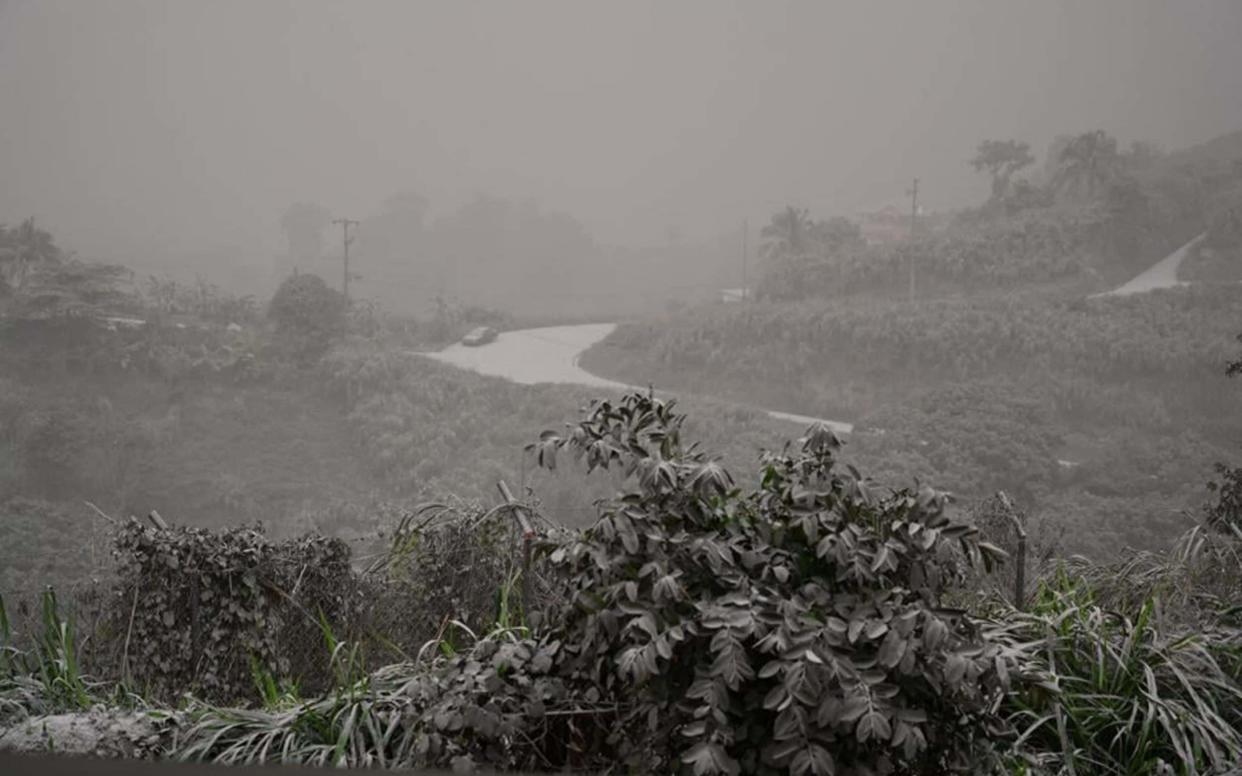Massive power outages strike St Vincent as officials record more volcanic activity

Massive power outages struck the Caribbean island of St Vincent before dawn on Sunday, as officials recorded more explosive activity at a long-dormant volcano that launched into a series of eruptions.
After remaining quiet for nearly 42 years, La Soufriere rumbled back into life Friday, blanketing the island in ash and permeating the air with the stench of sulphur.
The eruptions prompted thousands to flee for safety, with around 16,000 people living in areas under evacuation orders.
The country's National Emergency Management Organization (NEMO) noted "another explosive event" early Sunday morning with the "majority of the country out of power and covered in ash".
The volcano's explosive phase is expected to last several days or even weeks, according to the Seismic Research Centre at the University of the West Indies (UWI), which advised residents to avoid inhaling the volcanic ash.
The whitish powder caked roads, homes and buildings in Saint Vincent after the powerful blasts began Friday and continued into the night.
Visibility in some areas was extremely limited. While the volcano lies on the island's northern end, in the capital Kingstown on the south end the ash caused a thin haze of dust.
The thick clouds of dust expelled by La Soufriere have affected neighboring islands as well, traveling over 110 miles (175 kilometers) east to Barbados.
"Barbadians have been urged to stay indoors as thick plumes of volcanic ash move through the atmosphere," the Caribbean Disaster Emergency Management Agency said.
The initial blast from La Soufriere, the highest peak in Saint Vincent and the Grenadines, sent plumes of hot ash and smoke 20,000 feet (6,000 meters) into the air Friday morning.
Smaller eruptions took place Friday afternoon and Saturday, belching out further columns of ash, according to the UWI researchers.
Vincentian Prime Minister Ralph Gonsalves said Saturday that water has been cut off in most areas and the country's air space is closed because of the ash. Around 3,000 people spent the night in shelters.
"It's a huge operation that is facing us," Gonsalves told NBC News.
He said his government has been in contact with other countries that want to provide aid and that Guyana and Venezuela are sending ships with supplies.

The 4,052-foot La Soufriere - French for "sulphur mine" - had not erupted since 1979, and its largest blow-up happened over a century ago in 1902, killing more than 1,000 people.
It had been rumbling for months before it finally blew.
"We are trying to be ok. It's deathly quiet outside and the mood is pensive," said Vynette Frederick, 44, a lawyer in Kingstown.
Northwest of Kingstown on the 18-mile-long island, Zen Punnett said things had calmed down after the initial panic as evacuation orders came out Thursday night.
"It's gotten hazier. We are staying inside," she said.
Most of the people in the red zone had been moved to safety by Friday, authorities said.
Cruise ships were on the way to assist the evacuation effort.

